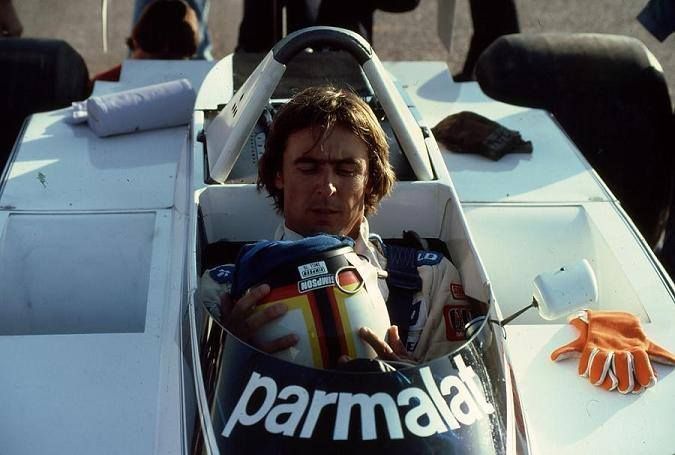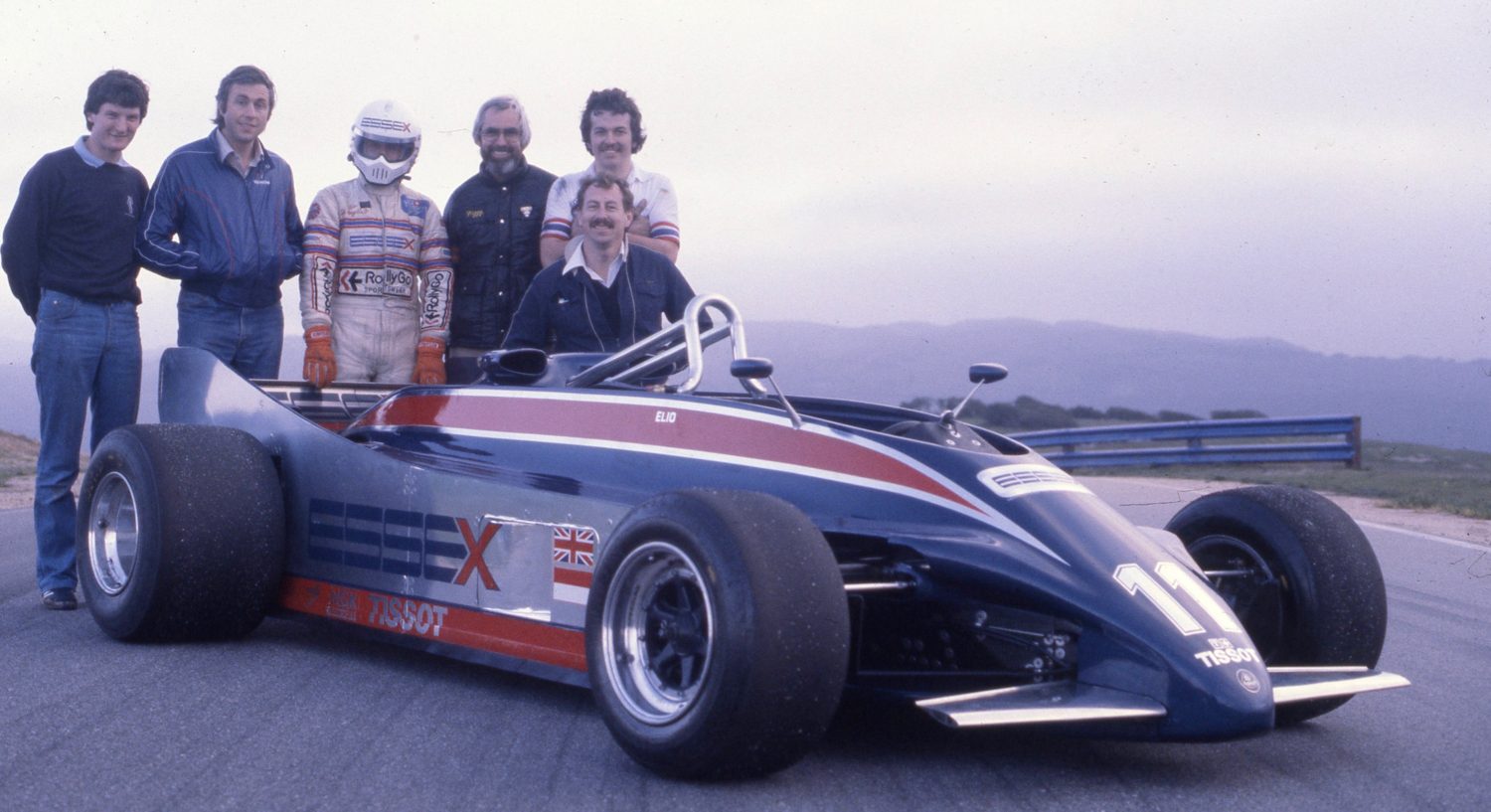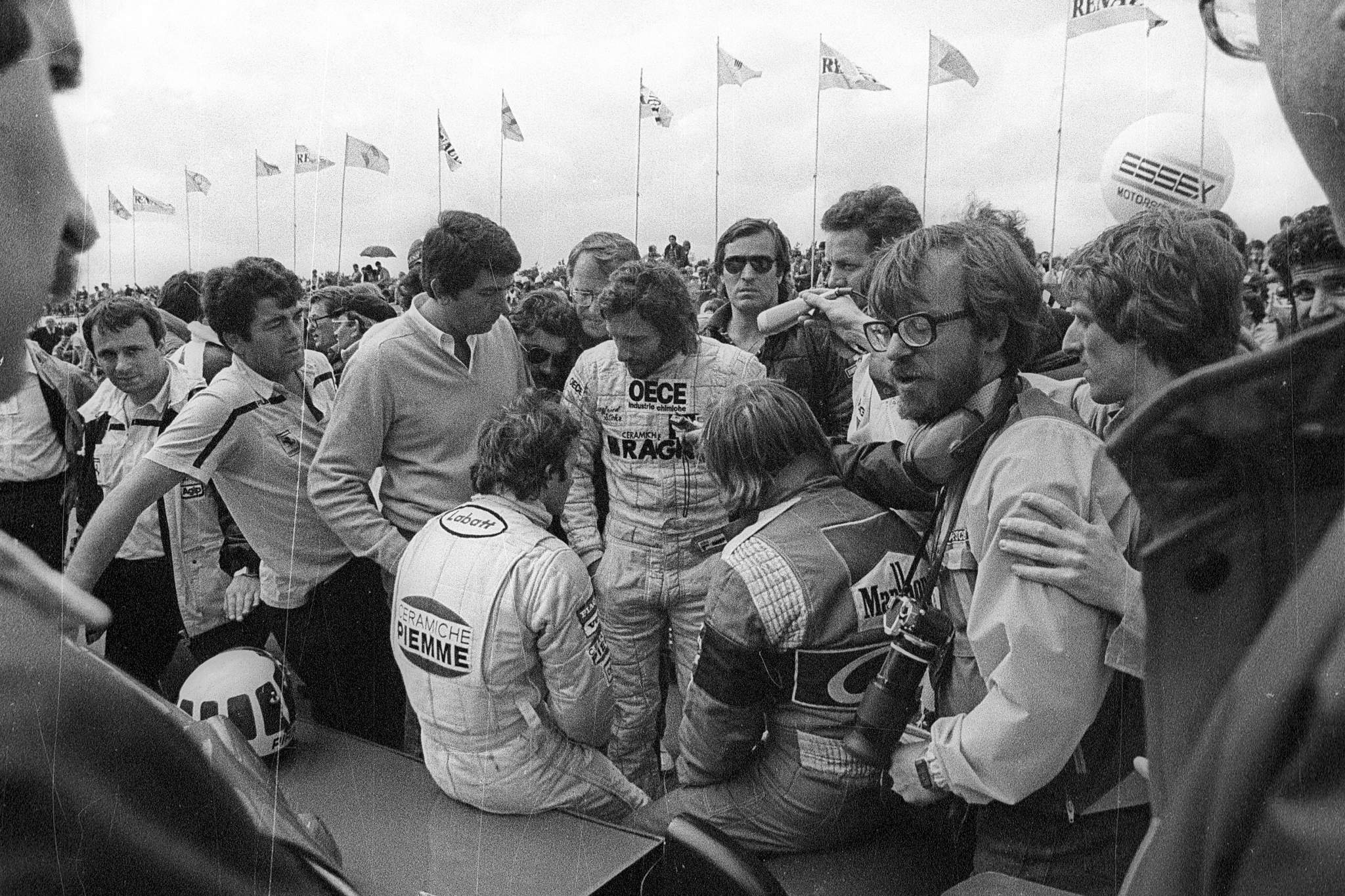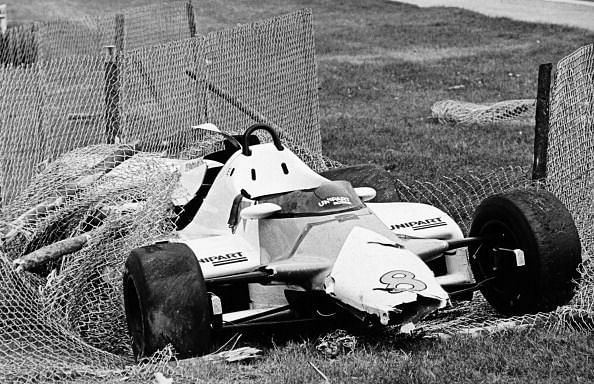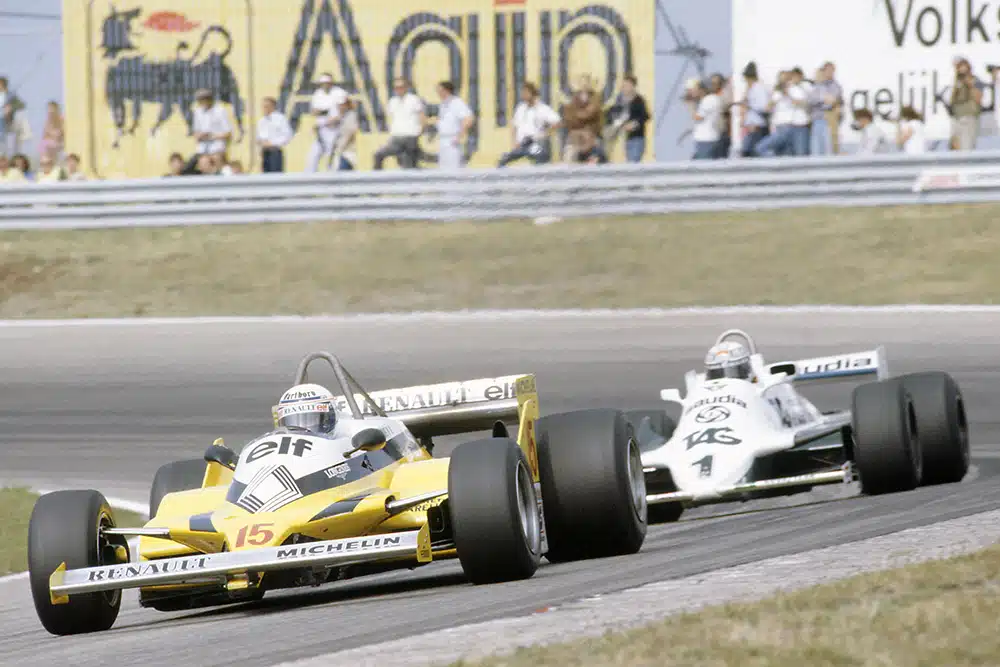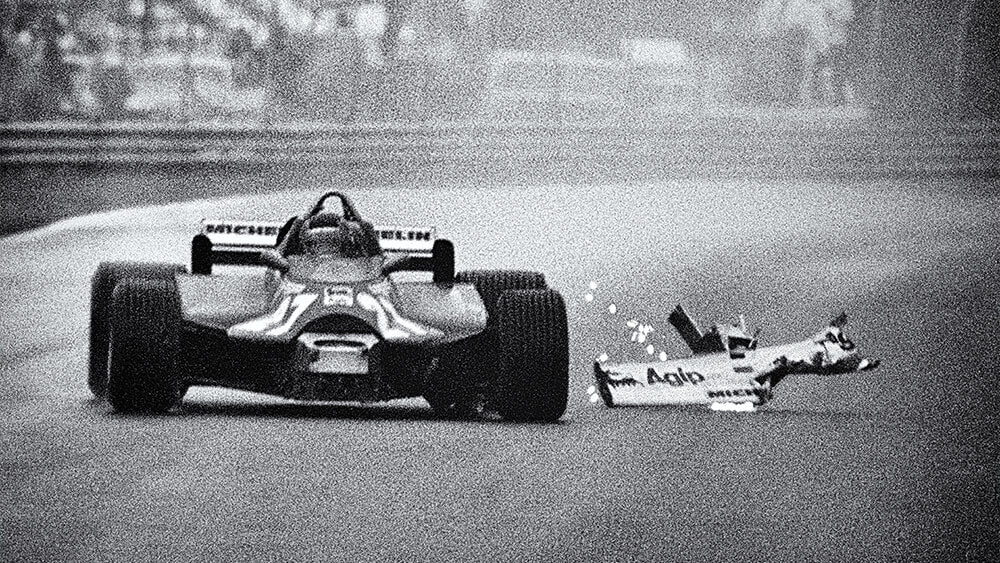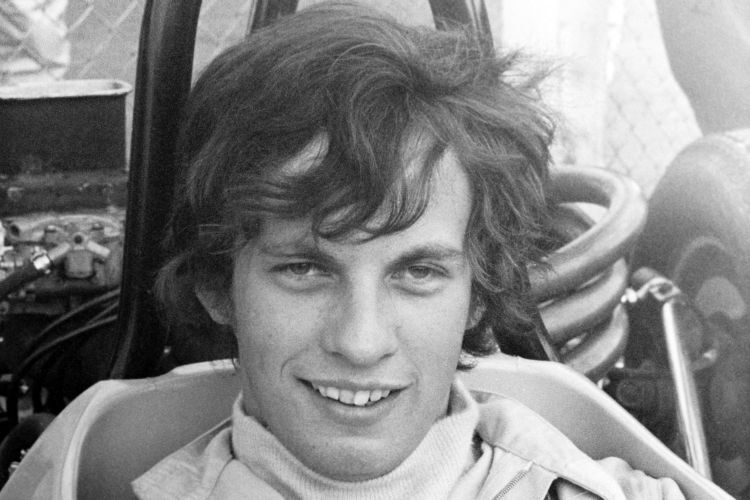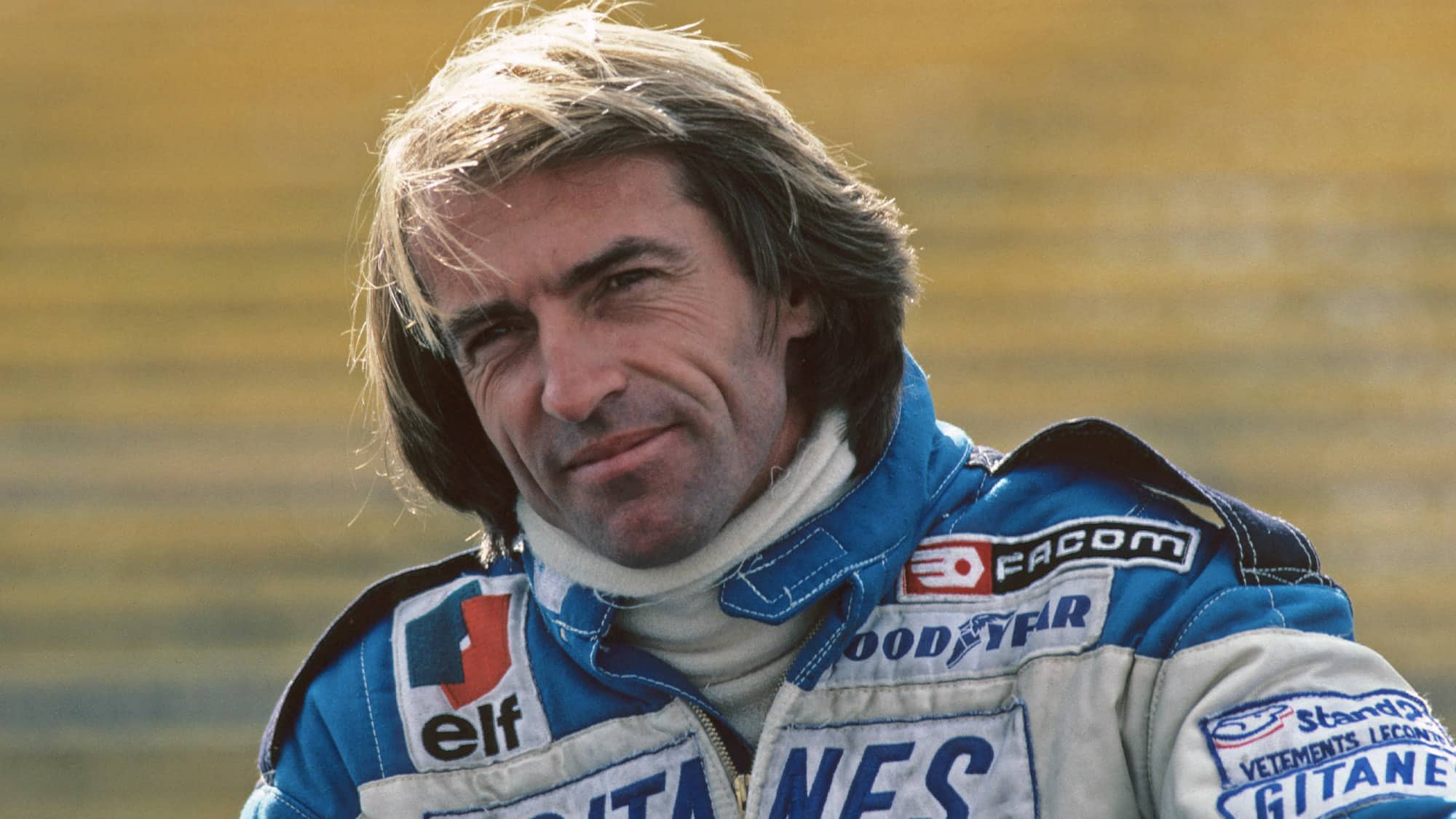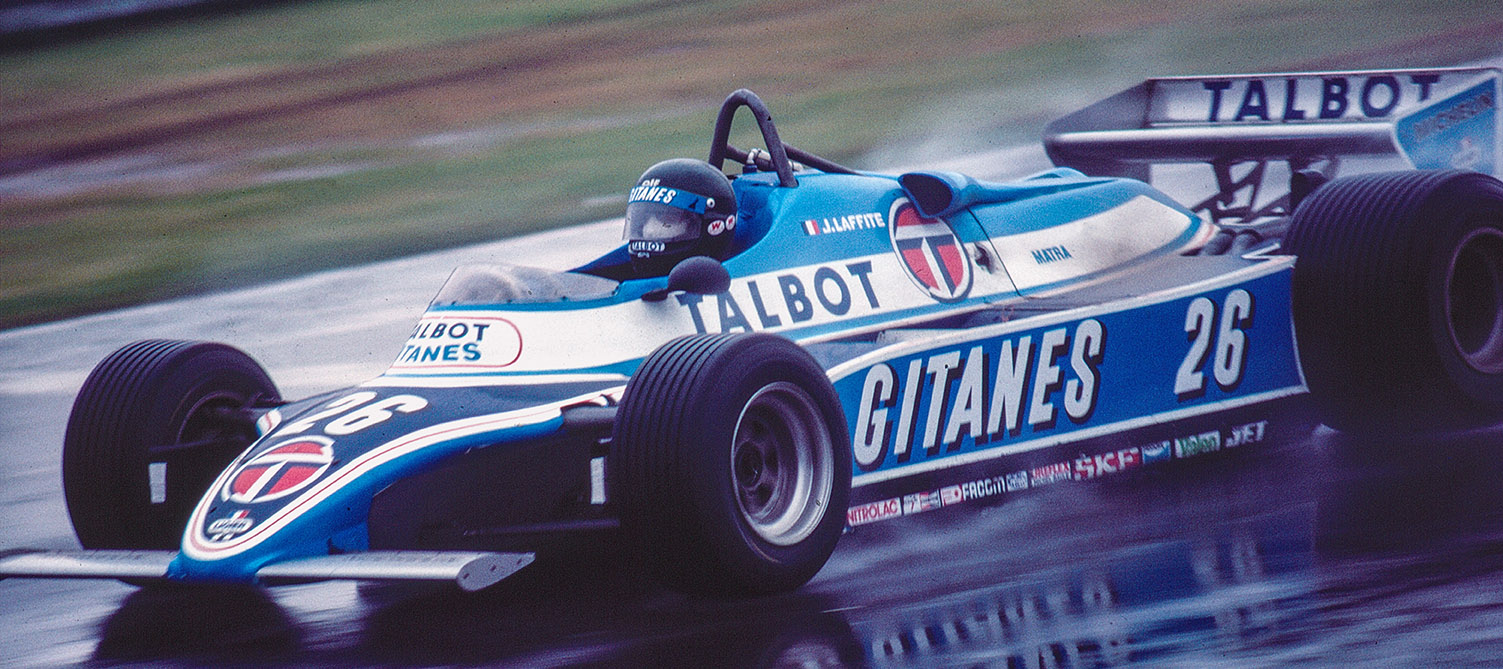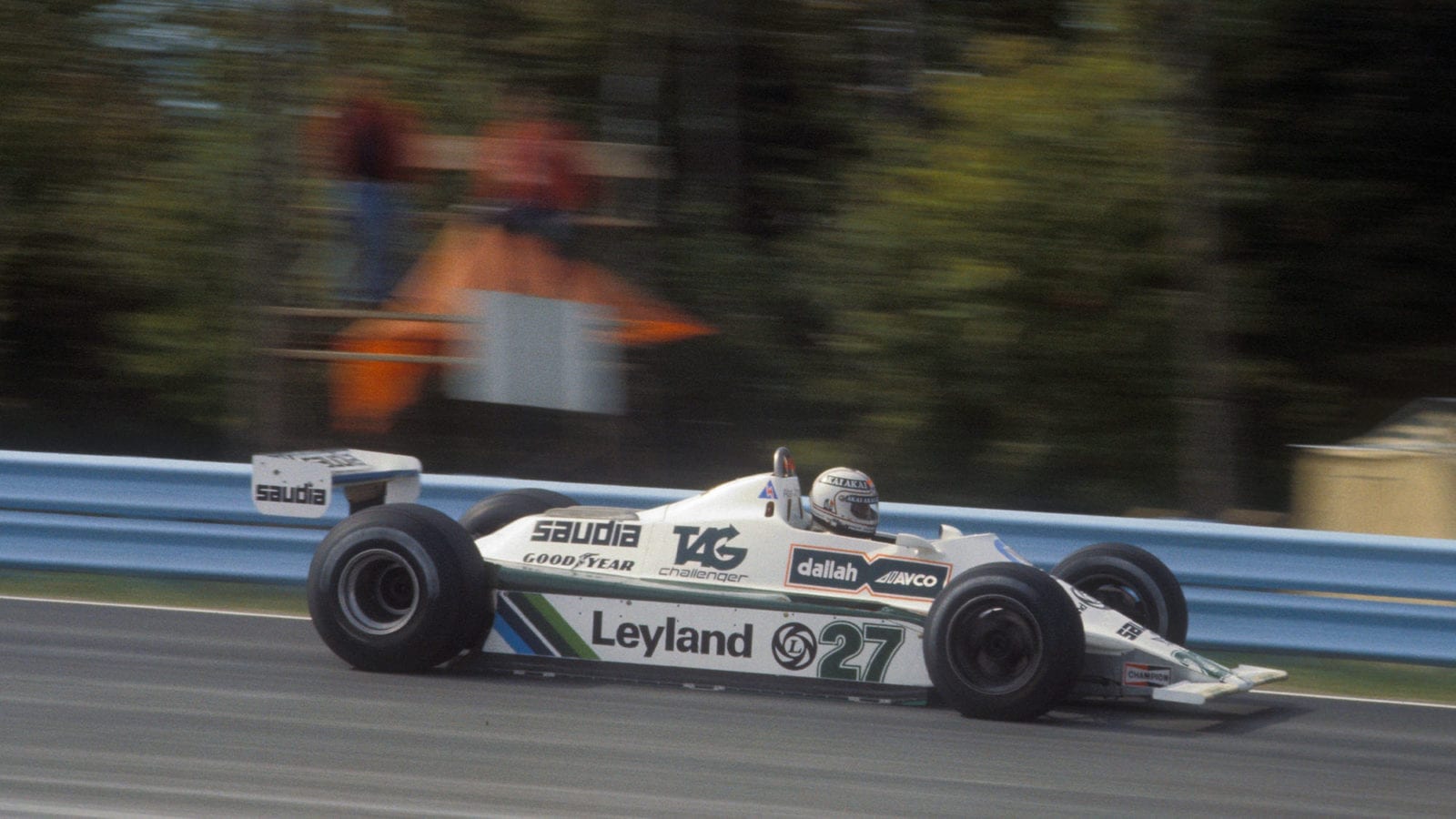1980: "Double first - Hill and Jones"
1980 Season of Grand Prix Racing
"Double first - Hill and Jones"

"Double first - Hill and Jones"

In the year of Blondie's "Call me", Francois Cevert was the reigning champion of the new decade. The sports' most popular driver, behind the wheel of the sports' most prestigious team, was a perfect combination for the media, as Cevert was France's first champion since Jean-Pierre Wimille. The Prince was a champion thanks to consistency, along with reliability thanks to the Ferrari 312T4. However, the late races of the 1979 season showed a turn. Ligier were still among the most competitive teams, despite the unreliability of the Matra V12, and their compatriots Renault were finally showing fruits of their four years of hard work. However, Hill was the team to watch coming into 1980. Alan Jones and Tony Brise were the team to beat in the final few Grands Prix of the season, and the GH4 showed plenty of promise, along with reliability thanks to the Chevrolet V8 engine. Alfa Romeo remained the same as ever, but now with a new car in the 180, while McLaren were scrambling for a new car, after their M28 proved to be a disaster. Ronnie Peterson was hopeful that this year would see some change, and he was to be joined by Bobby Rahal. The American was a refugee from the crumbling Wolf Williams project, and he was well liked by Bruce McLaren to in the end join his operation.
Rahals' departure left a hole in Williams, as Frank struggled to find a replacement for Jody Scheckter, who had retired in the Canadian Grand Prix. There was a slight remedy when the British squad merged with Fittipaldi, who were now being sponsored by Skol beer. The new era of Williams would begin with Emerson Fittipaldi behind the wheel, joined by Tom Pryce. Indeed, the Welshman had left Lotus after a disastrous 1979 season, as Colin Chapman's team struggled to catch up with the new generation of ground effect cars. Over at Shadow, Dutch talent Jan Lammers was joining the team along with Stefan Johansson, following Elio de Angelis' departure for Lotus. The game of musical chairs was certainly entertaining. But would it be the same for the season?
The Williams team for 1980 season
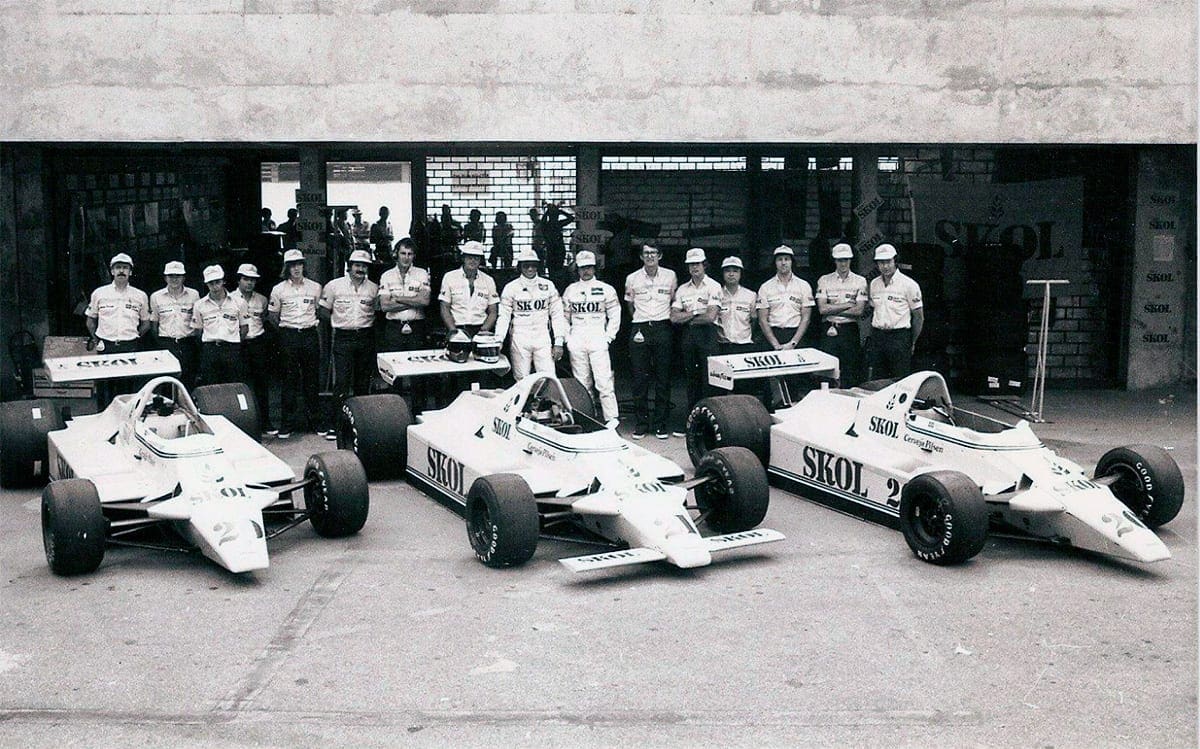
Rounds 1-4: Melting tarmac and flying turbos
Coming into Argentina for the inaugural Grand Prix of the season. The heat was unbearable, and drivers' protests almost caused the race to not be held because of the tracks' dire conditions. Once the race went underway, it quickly became apparent why. Alan Jones, despite leading for much of the race, saw challenges from several drivers. Laffite, Piquet, Brise and Villeneuve all tried to snatch the first position, with Villeneuve in particular driving a chaotic race. The brave French Canadian was naturally gifted as a great racer, but his temper was clearly visible in his battles with the top 3, where he ran off the circuit on several occasions until his Ferrari could not handle it anymore, and his suspension failed, causing him to suffer the first of several heavy shunts that he would go through in the following years. It was an omen for how Ferrari's season would carry on, while Alan Jones limped home to win the race, when the termac in itself was beginning to melt, and the track was falling apart. It was a scandalous affair, made all the more famous due to Carlos Reutemann's retirement while he was challenging for 3rd, where the Argentine's tears were seen by millions around the globe. 
Rounds 1-4: Melting tarmac and flying turbos
Brazil saw a similiar occurence, as Gilles Villeneuve flew into the lead at the start. But, the high altitude of the Interlagos circuit made him an easy target for Rene Arnoux, as the Renault flew past the Ferrari, and that's how it was for the rest of the race. Villeneuve's spirited drive once again ended in retirement, while Elio de Angelis gave some to Lotus to cheer for with his 2nd place, followed by a patient Alan Jones in 3rd. The Brazilian GP also saw Jan Lammers scoring his first points for Shadow, following Bobby Rahal, who had thus far settled well into McLaren, although the M29 was clearly behind the competition. Renault's form continued on to Kyalami, with an all French podium. Rene Arnoux, Jacques Laffite and Didier Pironi were the first 3, only followed by Nelson Piquet in the Brabham. With that, the only tune that could be played on that day was Le Marseillais.
Piquet's quiet but steady form had thus far helped him finish races, but it was the Grand Prix of Long Beach that propelled the young Brazilian into stardom. He took pole, scored the fastest lap, and led from start to finish, earning himself a Grand Slam in the process, and the role of a title contender. His win was accompanied by a debutant over at McLaren, following Bobby Rahal injuring his wrist. The young Frenchman that had just won the European Formula 2, Alan Prost, earned himself a drive for the Kiwi team, along with a contract with Ensign. Despite qualifying 14th, Alain's race did not last long, as he was collected in an opening crash. He came out unscathed, but not Clay Regazzoni. The Swiss veteran crashed appallingly at the end of the long, flat-out Shoreline Drive when the brakes on his BRM failed and he crashed head on through some tires and into a concrete wall. He was critically injured, but managed to survive, although paralyzed for the rest of his life. His crash brought a reaction from the GPDA, now led by Jackie Stewart and Didier Pironi, as they demanded better safety standards.
The aftermath of Regazzoni's incident
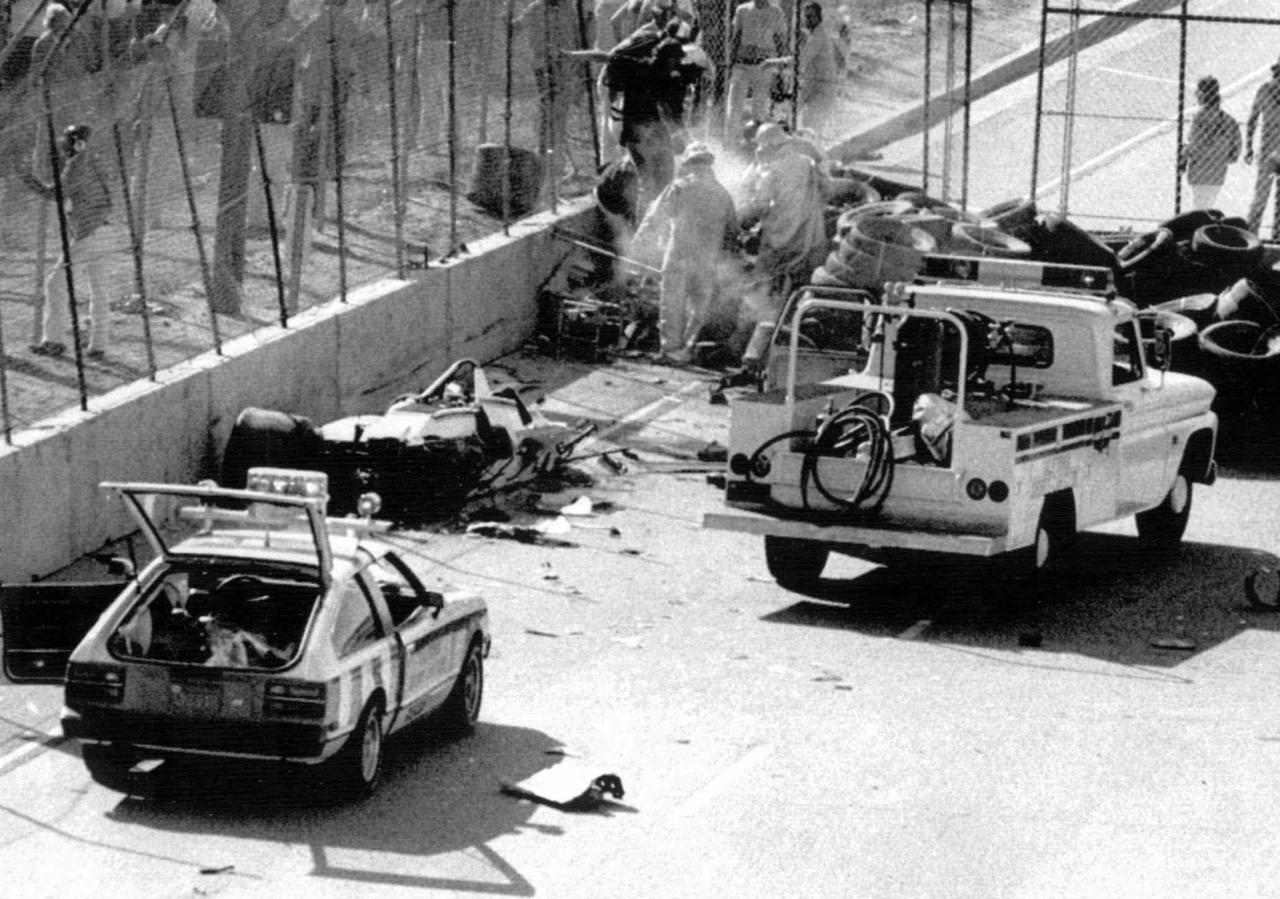
The European season: Jones on the move

The European season: Jones on the move
From the sun of California, the Grand Prix circus headed to Europe. The Zolder circuit was drenched during practice, but the weather improved on Sunday. The Hills were once again on the move, as Jones and Brise qualified 1st and 2nd on the grid. Yet, Didier Pironi was the one that stormed into the lead, never looking back as his Ligier worked perfectly for him. Pironi's perfect race was capped off with a win - his first ever in Grand Prix Racing, with Ligier now becoming the fourth winning team of the season. He was followed by the Hill duo. Stefan Johansson gave something to cheer for over at Shadow when the Swede finished 5th, ahead of Villeneuve.
And so, the next round was in Monaco, over at the playground of the rich. By 1980, Grand Prix was slowly returning to its glamurous image that it used to carry in the pre-war years and the early post-war seasons. The clash between the glamour of the high-octane spectacle and the poor neighbourhoods of Sao Paulo and Buenos Aires was becoming all the more jarring, and the South African situation wasn't complementary in the slightest either. 50 years ago - Grands Prix were marathons and on some occasions, road trips that lasted for over four hours, and some even for entire days, where the likes of Tazio Nuvolari and Achille Varzi drove thin, high-powered machines on narrow wheels. Now, in 1980, the men behind the wheel were driving wings on four wheels, with only the streets of Monte Carlo preserving the image of the sport's early days. Tony Brise, along with Ronnie Peterson, Patrick Depailler and Gilles Villeneuve were the most reminiscent of Tazio Nuvolari.
Rookie Alain Prost in the Ensign


The hard-charging, fast and flamboyant heroes of the sport were well-liked by the media because of that, and it proved to be a relatively good day for most of them. Brise dominated the event, on the very track that he had come close to winning in so many times, and Villeneuve moved up the field to perform some dazzling overtakes, most notably on Mike Mosley, with whom he had a race-long clash for 4th place. The American ace drove a splendid, and patient race in which he had to put up with the sport's toughest driver, and he used his opportunity when Gilles slipped through the Casino section to snatch 4th. His best result thus far was then surpassed in the very next race, where he finished 2nd thanks to a slew of retirements under the heat of Jarama. The race also saw plenty of progress for Alfa Romeo. Patrick Depailler qualified 4th with the new 180 machine, but the poor reliability meant that he didn't go far. It was still further than Ronnie Peterson, who suffered the first ever DNQ in his long career. It was not a good season for Peterson, and many doubted if he was going to stay for next year. Yet, the race was to be known for the opening melee, when Stefan Johansson rammed into the back of Jean-Pierre Jarier, causing his Shadow to be lifted up in the air, where the Candy sponsor would be seen in the very pictures. It was certainly one way to promote the brand, but not one that Candy were fond of.
The opening lap crash in Monaco
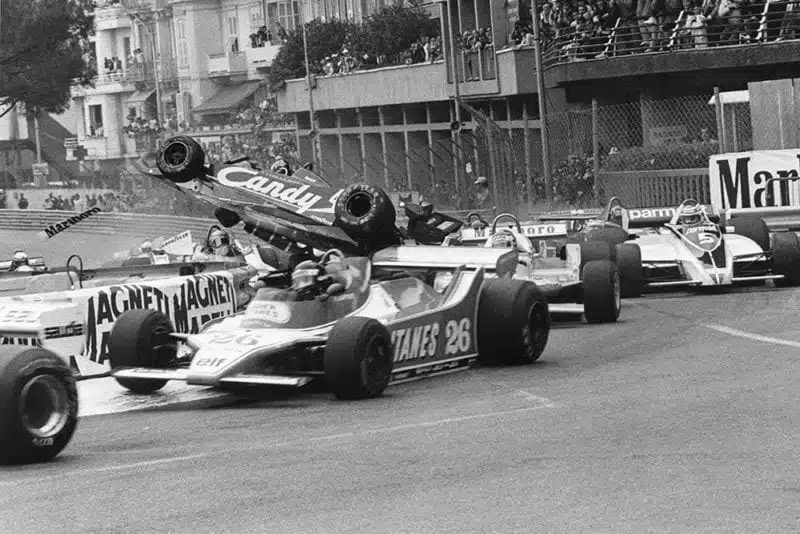

Hill's form continued on like this for the next four races, as Alan Jones went on to win three consecutive times. Despite the Hill only having a Chevrolet V8 engine, it was by now powerful enough to be competitive against the turbos, even on a track like Paul Ricard. However, it was more than just power. The GH4's utilisation of ground effect was far superior to almost the entire grid thanks to the usage of skirts underneath the car, with perhaps only Ligier being close to it if it wasn't for the heavy Matra V12 it had. Jones' hattrick of wins had made the Aussie the prime candidate for the world title. From Belgium to Austria, the Hill cars finished on the podium 11 times, an unprecedented amount by any standards. Any competition the British team had would either break down, or was simply nowhere near as fast, with only Jacques Laffite managing to stop this streak in Hockenheim, while the Osterreichring saw Jean-Pierre Jabouille, always down on his luck, finally seeing a finish in 1st. It was to be the unlucky Frenchman's last ever podium finish.
At Zandvoort, Jones looked like he was once again on course to take another win, which would have been his 6th consecutive finish in the top 3. Yet, it wasn't. Right on lap 2, Jones drove into the pits, having damaged one of his all-important skirts. The race was now wide open. Nelson Piquet seized his chance as a result, barging past Rene Arnoux to take the lead, from which he never looked back. The young Brazilian showed plenty of patience, and drove a safely to win his second ever race. Riccardo Patrese was 3rd, further showing Alfa's progress. At Italy, the great change was the venue in itself. The Monza Autodrome was switched with the new Dino Ferrari circuit in Imola, with fast and sweeping corners like Acque Minerali, Tosa and the fearsome Tamburello, on which it was normal for cars to go flatout thanks to the ground effect. With this being Ferrari's home race - the Scuderia showed up with the new 126C. The car, while similiar to the 312T4 of the yesteryear, now featured a brand new V6 Turbo. While the reliablity wasn't there just yet, and neither Gilles or Francois made it easier by crashing the car in the race - the Tifosi could be hopeful. The car was fast. The other Italian cars weren't that lucky either, as Patrese crashed out on the second lap, while Depailler's gearbox conked out, leaving the mostly British and French cars to navigate the Italian circuit. Nelson Piquet, who had just won in Zandvoort, now won his 2nd consecutive race. It was enough to make him the last remaining challenger for Jones, along with Brise, but he had a mutual deal with Jones that effectively made him his #2 this year. With all to play for in the upcoming American tour, Piquet could only hope bad luck would stop the Aussie from winning it all.
Gilles Villeneuve in the Ferrari 126C... Or what's left of it
The American tour: "The usual"

The American tour: "The usual"
Coming into Montreal. Nelson Piquet still had the slimmest of chances to ruin Hills' party. He was on Pole, lined up with Jones, and in hope of outrunning him to the chequered flag. Yet, the Brazilian didn't even get to complete a 10th of the race, as he was involved in an opening crash which saw a pile up occur. Among the unlucky few was Piquet, while Jones now had a damaged car. As the race progressed, Jones settled into simply taking the car home, following his teammate and Didier Pironi, who once again drove a fine race to win it all for Ligier. Ronnie Peterson also used all of his talent to take the ailing M30 to the dizzying heights of 3rd, barging his way at the hairpin to snatch 3rd from Jones, who went on to finish 4th. With one race remaining, Piquet had to win the race, and hope that Alan would finish lower than 4th. Desire Wilson also came home in 6th, becoming the third woman to score points in Grand Prix racing, while also giving something to BRM to cheer for, following their horrid season.
At Watkins Glen, Patrick Depailler finally capped off Alfa's rise with a Pole Position, outrunning Piquet in the qualifying round by 0.7 seconds. The Frenchman never looked back, and he drove a stellar, if dominant race to win the event, bringing Alfa their first win since 1951. Behind Depailler, Piquet tried too hard and spun off, with Brise and Jones driving in formation to finish 2nd and 3rd respectively. Rahal's torrid season came to an end at the first corner, when he spun off and stalled the engine, while the other competitors dropped like flies. It was a relatively uneventful race, in which Alan Jones came 3rd to become the world champion. He was the second Australian to win the crown, while Graham Hill's team had won their first ever double as a result of their phenomenal season. It was a perfect season from beginning to end, with Depailler's win giving Alfa something to be optimistic about for 1981.
Patrick Depailler outrunning the field
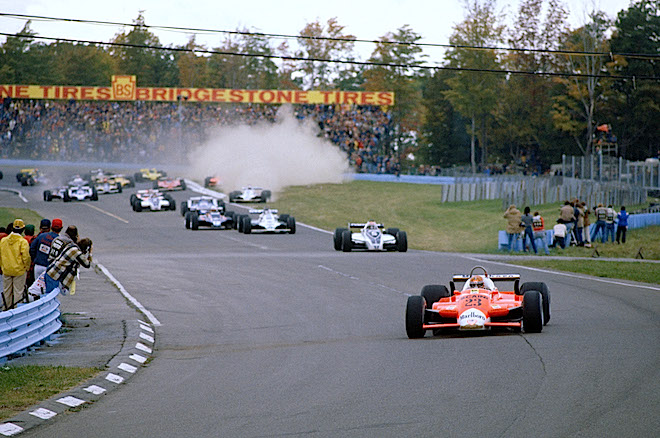
Drivers' championship

Drivers' championship
Constructors championship:
1. Saudia Hill Chevrolet: 117
2. Gitanes Ligier Matra: 68
3. Permalat Brabham JUDD: 63
4. Equipe Renault Gordini: 38
5. Autodelta Alfa Romeo: 17
=Essex Lotus Ford: 17
7. Marlboro McLaren Weslake: 12
8. Warsteiner Shadow Chevrolet: 11
=Skol Williams Chevrolet: 11
10. All American Racers Eagle Chevrolet: 10
=Scuderia Ferrari: 10
12. British Racing Motors: 1
With a combination of reliability and great piece of engineering, Alan Jones and Hill have become the hit of 1980. The simple but effective GH4, accompanied by a duo of hard racers has dominated the Grand Prix lanscape, with any other car not even being close to them. Piquet's late form came in when it was all settled, while Uncle Ken probably searched for a better alternative to Jarier, who had a dreadful season. Francois Cevert was also looking elsewhere after his poor run of luck in 1980, while Ligier were hoping for 1981 to be their year, as did Renault. With the ground effect seemingly taking over the sport, FIA just had to accept that the 1980s wouldn't just see the continuation of F1's march for innovation, but that it was going to stay for a long time. However, 1981 was on the horizon, and so was what would soon become one of the greatest championship fights in the history of motorsport. Up next, it's 1981 - "Start to Finish"1. Saudia Hill Chevrolet: 117
2. Gitanes Ligier Matra: 68
3. Permalat Brabham JUDD: 63
4. Equipe Renault Gordini: 38
5. Autodelta Alfa Romeo: 17
=Essex Lotus Ford: 17
7. Marlboro McLaren Weslake: 12
8. Warsteiner Shadow Chevrolet: 11
=Skol Williams Chevrolet: 11
10. All American Racers Eagle Chevrolet: 10
=Scuderia Ferrari: 10
12. British Racing Motors: 1
Tony Brise and Graham Hill having a chat

Last edited:

